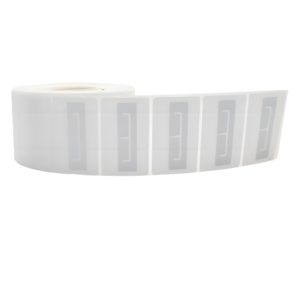
5 Questions for RFID Based Digital Asset Management
5 Questions for RFID Based Digital Asset Management
1. What is RFID Asset Tagging?
Any physical asset is exactly that, an asset. Asset tagging will help you to track your assets, for a number of reasons:
* To ensure loss is minimised
* To ensure maximum use is made of your assets
* To manage repair / maintenance of assets
* To manage PAT testing schedules
* Saving money, by understanding your assets better your make better use of them and save money against waste and loss
RFID is part of many asset management systems and forms the link between the asset itself and the database that stores the required information for that asset. But the system itself allows you to maximise the usage of your assets.
2. How Does RFID Work?
There are a number of types of RFID tags using slightly different technology within them to communicate with a reader.
An RFID tag will usually contain an aerial and a microchip. Some will contain a battery but most will not. All RFID uses radio frequency to communicate, some operate on High Frequency some on Ultra High Frequency. The main difference is the distance the signal can travel, UHF travels further than HF as a rule of thumb.
There are also both powered and passive RFID tags, put simply, powered tags have a battery and can send a signal further, passive has no battery and generates charge from the radio signal it receives from the reader, its signal is not as strong and therefore doesn’t travel as far.
3. What Are My Options?
There are many systems on the market today, most systems, will use RFID instead of a barcode, though this is not a necessity it has a number of key benefits.
Firstly, the ability to read multiple items quickly and simply. A recent retail application of RFID showed a more accurate read was achieved than a manual barcode scan process.
Secondly, the speed of the data capture with the RFID system was less than 5% of the time taken in a manual process.
4. What Are the Different Types of RFID?
The two most widely used RFID types are Active and Passive. Active RFID tags are self-powered, allowing the tag to have a larger communication distance and more memory capabilities. Passive RFID tags are powered by an electromagnet signal that is transmitted from the reader, making them a slightly cheaper option than active RFID. Passive RFID works by using the signal from the reader to charge the tags capacitor, supplying the power needed to communicate.
The simplest way to break RFID down however is by the frequency in which they operate. These are low frequency, high frequency and ultra-high frequency. The RFID tags radio waves act differently depending on these frequencies.
Low Frequency RFID penetrates most materials, from water to body tissue, making it ideal for animal identification. Tags can also be easily applied to any non- metallic items and will provide a short-read range of around 10cm. LF RFID does mean a relatively low data transfer rate, so slower communication and it can be affected by electrical noise in an industrial environment.
High frequency RFID is not as effective as low frequency in the presence of water and body tissue but should not be affected by electrical noise in an industrial environment. Making this type of RFID system more popular in ticketing and data transfer applications. HF RFID has a higher data transfer rate and this increase in speed allows for the reader to communicate with multiple tags at one time. A HF reader can read more than 50 tags per second with read range of between 10cm and 1m.
Ultra-high frequency is perfect for supply chain markets where a longer read range is required. UHF RFID has a read range as long as 12m, a faster data rate than LF and HF RFID and its performance remains high even in difficult environments. On paper RFID is really quite simple, but its capabilities are huge and it’s becoming a powerful tool for all industries. Before implementing RFID a good understanding of the technology is advised in order to find a process that has the most benefit and return on investment (ROI) for you. This article gave you a basic understanding of what RFID is and how RFID works but please get in touch if you want to further discuss the benefits of RFID for your business.
Benefits to RFID Asset Tagging
1. Sales crowth
2. Quick, precise identification for inventory
3. Data source
4. Live accurate database
5. Faster distribution
6. Reduced labour in logistics mangement
7. Improved read accuracy
8. Multiple items at once
5. Who Will Perform The Asset Tagging Procedure?
Your first instinct is probably to use your own staff to perform the task, that would be the natural conclusion. Please don’t, or if you do, make sure that the asset data being input is closely monitored. Managing the quality of the tagging process is essential, it is better using a commercial solution company.





